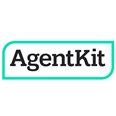Agentic AI Comparison:
AgentKit vs Bolt.diy
Introduction
This report provides a detailed comparison between Bolt.diy and AgentKit, two open-source platforms for AI-powered agentic development. The evaluation considers autonomy, ease of use, flexibility, cost, and popularity to highlight their respective strengths and suitable use cases.
Overview
Bolt.diy
Bolt.diy is an open-source tool designed for AI-assisted full-stack web development directly in the browser. It supports multiple large language models (LLMs), offers an integrated code editor and terminal, and emphasizes developer control and customization. The platform is particularly attractive to developers who want fine-grained authority over architecture, stack elements, and integrations, with options to self-host and use a variety of LLM APIs.
AgentKit
AgentKit is a full-stack starter kit developed by BCG X for building 'constrained agents'—AI applications designed with explicit rules and guardrails. It focuses on rapid prototyping, production readiness, and includes utilities for data security, traceability, and quick deployment. AgentKit features a suite of backend and frontend components, integration with API management, and is tailored to enterprise and advanced agent use cases.
Metrics Comparison
autonomy
AgentKit: 8
AgentKit offers strong autonomy through its highly customizable agent framework and explicit support for developing bespoke guardrails and logic. However, its focus on 'constrained agents' means it guides users toward best security and operational practices, which may slightly limit unconstrained customization compared to Bolt.diy.
Bolt.diy: 9
Bolt.diy provides users with significant autonomy, allowing granular control over stack choices, manual overrides, and integration of any LLM. Advanced users can self-host, use Docker, and directly manipulate the codebase and terminal within the platform.
Both platforms support high autonomy, but Bolt.diy edges ahead due to its open-ended approach and full stack/developer-level access.
ease of use
AgentKit: 8
AgentKit streamlines the process of building production-grade agents with clear documentation, templates, and standardized utilities. Its structure is especially advantageous for enterprise teams and users who prefer guided workflows over granular DIY setup.
Bolt.diy: 7
Bolt.diy is accessible via a browser, supports local installation, and is beginner-friendly for those comfortable with coding. However, the high degree of control and customization can introduce complexity for non-developers or those new to AI agent tools.
AgentKit generally has a gentler learning curve thanks to its starter templates and guided approach, making it more approachable for structured team environments.
flexibility
AgentKit: 8
AgentKit is flexible within its architectural paradigm, allowing customization of agent behaviors, API integrations, and security policies. Its opinionated structure, however, is optimized for production agents and may require conformity to certain patterns or guardrails.
Bolt.diy: 9
Bolt.diy stands out for its flexibility: it supports multiple LLMs (OpenAI, Anthropic, Ollama, Groq, etc.), extensible architecture, and in-browser or local running. Developers can easily integrate new models, adjust stack elements, and even interact directly with the generated code and terminal.
Bolt.diy is somewhat more flexible, particularly for experimental or unconventional use cases, due to its modular, open, and stack-agnostic design.
cost
AgentKit: 9
AgentKit is also open source and free to use. However, as a reference full-stack kit, more advanced deployments may require investment in cloud hosting, infrastructure, or enterprise-grade integrations, which could add to operational costs.
Bolt.diy: 10
Bolt.diy is completely free and open source, with no licensing fees. Users only incur standard compute or third-party API costs if using paid LLMs.
Both platforms are highly cost-effective, but Bolt.diy is slightly more favorable due to its in-browser operation and no required deployment overhead.
popularity
AgentKit: 7
AgentKit is newer but quickly gaining recognition, especially among enterprise and advanced agent development teams due to its BCG X backing and alignment with production needs. Its community is expanding but not as broad as Bolt.diy's grassroots adoption.
Bolt.diy: 8
Bolt.diy has notable traction among open-source AI developers, with a growing community and over 1,600 tracked users, plus a buzz score of 90%. It is recognized for its extensibility and in-browser development experience, particularly in developer circles.
Bolt.diy currently enjoys broader popularity, especially among independent developers, while AgentKit is growing in the enterprise and agentic AI communities.
Conclusions
Bolt.diy is ideal for developers seeking maximum autonomy, flexibility, and cost efficiency in building full-stack AI-powered apps, especially for experimentation or custom deployments. AgentKit excels as a structured, enterprise-ready solution for building secure, production-grade agents with robust templates and best practices. Both tools are open source and cost-effective, but the best fit depends on whether the priority lies in unrestricted developer control (Bolt.diy) or scalable, production-oriented agent development (AgentKit).

